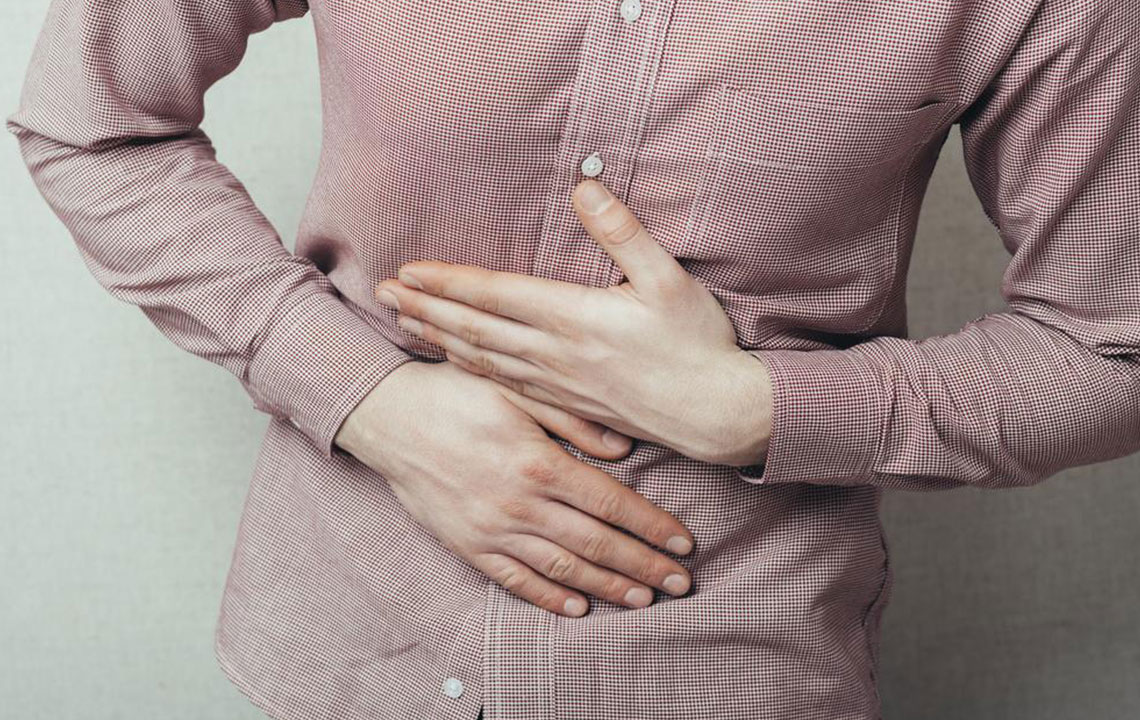Diverticulitis – Causes, Symptoms, and Diet

Diverticulitis is an infection/inflammation that occurs in the intestine of the digestive tract. Small pouches called diverticula start developing along the walls of the intestine.
Diverticulitis is a serious condition that may even require surgery. In this condition, there could be a small abscess in the pouches and go on to cause a severe infection or a massive perforation of the bowels.
Symptoms
Diverticulitis starts to manifest by causing cramps on the left side of the abdomen. The pain eases after you move the bowels or pass gas. Bright red blood in stool is another indication of this condition.
Prolonged infection can lead to bowel obstruction, which can cause abdominal pain, bloating, diarrhea, constipation, thin stools, nausea, and vomiting.
Delay in treatment will require surgery. The surgery would be needed to treat abscesses and fistulas. In case of severe bleeding, a blood transfusion would be required.
Causes
An improper dietary pattern can be one of the causes of diverticulitis. Obesity, low level of physical activity, and how frequently you smoke can also determine if you are prone to this digestive disease.
Diverticulitis diet
Antibiotics are the first course of treatment to contain the infection. Changing your diet pattern is a long-term strategy to control the symptoms. Studies have found that following a prescribed diet can help those suffering from diverticulitis. The aim of following the best diet for diverticulitis is to ease the strain on the digestive system and help in the healing process. By following the best diet for diverticulitis, it is possible to reduce the symptoms and prevent any flaring.
Listed below are some of the best diet for diverticulitis.
Liquid diet
If you exhibit any of the symptoms, it is best to switch to a liquid diet. Water, vegetable/chicken broth, tea, coffee (without milk/cream), clear soups, fruit juices (without the pulp), and popsicles.
Although this is the best diet for diverticulitis, following a liquid diet for more than 2-3 days can lead to weakness. You need to start taking supplements. Also, you must have a good amount of fluid intake, so that stools are formed and passed easily.
After a few days on the liquid diet, you can move on to a low-fiber diet.
Low-fiber foods
As the symptoms ease, you can move to a low fiber diet. In the beginning, it is recommended that the fiber intake is kept to under 10 grams a day. Following this type of diet decreases the bowel volume and helps the infection to heal.
Here is the list of foods that can be eaten when following a low-fiber diet.
Cooked and canned fruits (without the skin and seed), fish, poultry, eggs, fruit juices (without pulp), white rice, pasta, noodles, milk, low-fat dairy products, and cereals that are low in fiber. Drink 7-8 glasses of water to ease digestion.
If you notice an improvement in symptoms, the fiber intake can be gradually increased.
High-fiber foods (After symptoms subside)
Including high fiber foods in your diet is the best antidote to treating diverticulitis. But, if you are recuperating after an acute attack of diverticulitis, it’s better that you wait for the symptoms to completely subside before you switch to a high fiber diet.
The recommended intake of fiber is about 25-35 grams per day. Include whole grains, fruits, vegetables, bread, pasta, beans and legumes in your diet. High-fiber foods add bulk to the stool and ease the pressure on the colon. Plus, the fiber-rich foods also help in regular and complete bowel movements. This, in turn, has the effect of controlling the symptoms and prevent the formation of diverticula.
If you feel that symptoms start to resurface, reduce your fiber intake immediately.
Nuts and seeds
Seeds and nuts provide a rich source of fiber. Eating them on a regular basis provides the body with the required amount of fiber. Intake of fiber can arrest the incidence of diverticulitis. You can also eat seeds of cucumbers, pumpkin, sunflower, zucchini, tomatoes, and strawberries.
Probiotics
Probiotics contain bacteria that help to maintain good intestinal health. There are a variety of probiotic strains that help to reduce the symptoms of diverticulitis. Especially Lactobacillus casei and Lactobacillus paracasei.
Fermented foods are the best source of probiotics. Some of them include yogurt, kefir, sauerkraut, kimchi, and miso. Also, you can take probiotic supplements from reputed brands.
Vitamin D supplements
Studies have proved that there is a higher risk of diverticulitis in people with low vitamin D levels.
Since vitamin D can’t be harnessed naturally from any other source other than the Sun, supplementation is recommended. In fact, a number of digestive disorders can be associated with the deficiency in vitamin D.
To conclude, an adequate fluid intake will ease bowel movements and keep your digestive system healthy.
A healthy digestive system holds the key to good health, so follow the best diet for diverticulitis.


